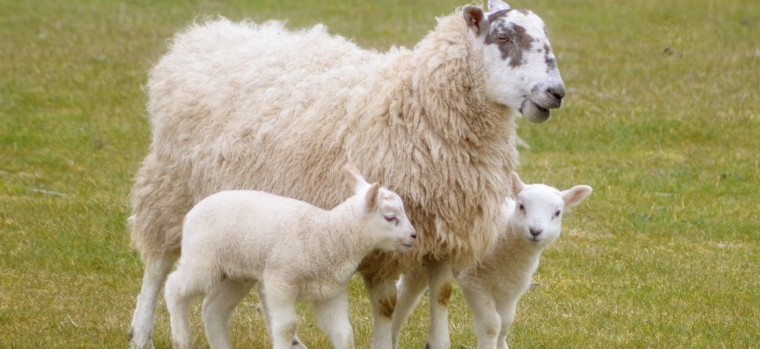Commenting on the best approach to nutrition, Dr Kenton Hart, Caltech Crystalyx technical manager, said: “Throughout an ewe’s pregnancy, regardless of system, the nutritional demands follow the same pattern, and its vital farmers focus on the timely needs of the pregnant ewes to reduce losses and maximise performance.
“Nutrition in mid pregnancy should be sufficient to optimise placental growth. Foetuses undergo very little growth in mid pregnancy, but growth of the placenta continues and is completed by the end of the third month of gestation. The placenta provides all the nutrients for the unborn lambs in late pregnancy and poor placental development will result in low birthweight lambs with poor viability – irrespective of late pregnancy feeding.
“So, mid pregnancy feeding should aim to maintain ewe condition as far as possible. Loss of body condition in mid pregnancy will only reduce body reserves available for milk production in early lactation.
“Research work by SAC showed that a sub-clinical deficiency of cobalt in the first half of pregnancy resulted in lambs which were slower to stand and suckle and much more susceptible to neonatal diseases. All these symptoms occurred irrespective of late pregnancy feeding, so it’s important not to put all your efforts into late pregnancy nutrition – mid pregnancy efforts will be rewarded.
“Access to dry hay in mid pregnancy is always beneficial and can be complemented with a high energy feed block together with trace elements, minerals and vitamins to stimulate forage digestion and fermentation in the rumen and help bridge any dietary shortfall. This is a proven and very easy practice to put into place.
He adds: “Lamb survival is largely dependent on a good birthweight and high lamb vigour, coupled with good maternal care and a swift onset of lactation by the ewe. With 70% of foetal growth taking place in the final 6 weeks of pregnancy, all these factors are dependent on good late pregnancy nutrition.
“As the unborn lamb grows, so does the energy demand placed on the heavily pregnant ewe. The more lambs she carries, the greater her daily energy requirement. But as the volume of the uterus increases with growing foetal size, rumen volume is decreased due to a lack of available space in the abdomen, illustrating the need for effective nutrition. It’s all about quality and not quantity.
“If the ewe is fed an energy deficient diet in late pregnancy, to maintain the growth rate of her unborn lambs the ewe supplies them with extra energy from her own body reserves – her own backfat. The fat is transported to the liver where it is broken down into useable units called ketone bodies.
“However, if the energy deficit is too great and the ewe mobilises too much fat, the level of ketone bodies in the blood actually begin to poison her and she goes down with twin lamb disease (pregnancy toxaemia). Most cases of twin lamb are caused by under feeding of multi-foetate ewes – a true dietary energy shortfall. But twin lamb can also occur in well-fed over-fat ewes – they become “lazy feeders” – and their appetite falls more quickly in late pregnancy than it does with fit ewes. Getting the balance right is critical.
“Research shows that feeding energy feed blocks on a self-help system allows ewes to regulate their intakes according to their requirements. Because it is licked, a feed block provides a continual “trickle feed” of nutrients to stimulate rumen fermentation and forage digestion.
“The time of introduction of supplementary feeds in late pregnancy is dictated by forage quality and lamb burden. Single-bearing ewes can be left outside and fed hay and high-quality feed blocks with no further supplementary feed necessary – and this can reduce the risk of over-sized single lambs.
“Twin and triplet-bearing ewes will need supplementary concentrate feeding; and the timing of their introduction will depend on the quality and quantity of available forage.
“With forage stocks proving a challenge this winter, it is especially important to utilise it as effectively as possible. Look for products that are proven to stimulate forage intakes and digestibility – resulting in better use of home-grown forage and potentially delaying the introduction of supplementary feeds. This will ultimately see a reduction of overall costs.”
Visit the Crystalyx website for more information or call 016973 32592




